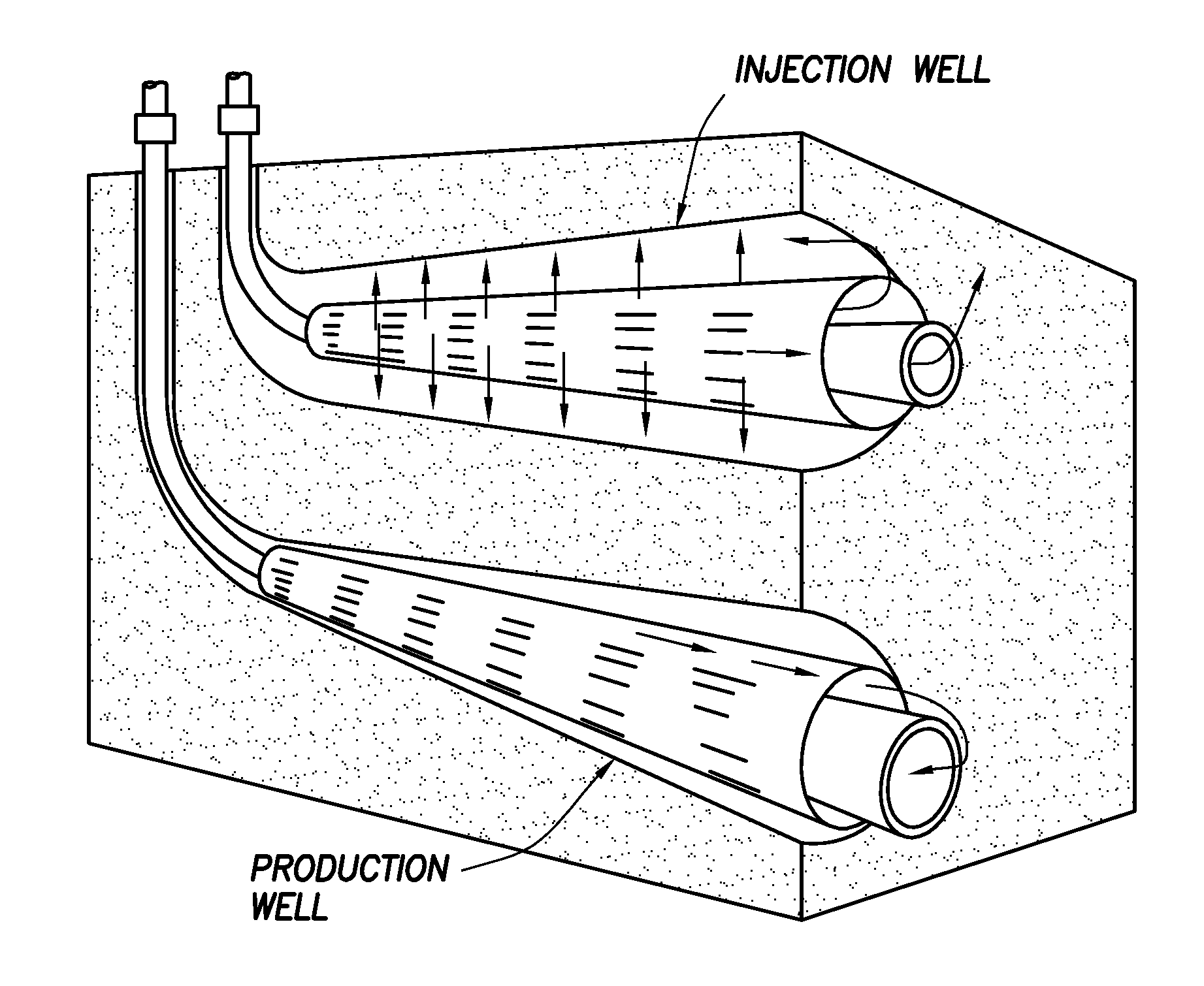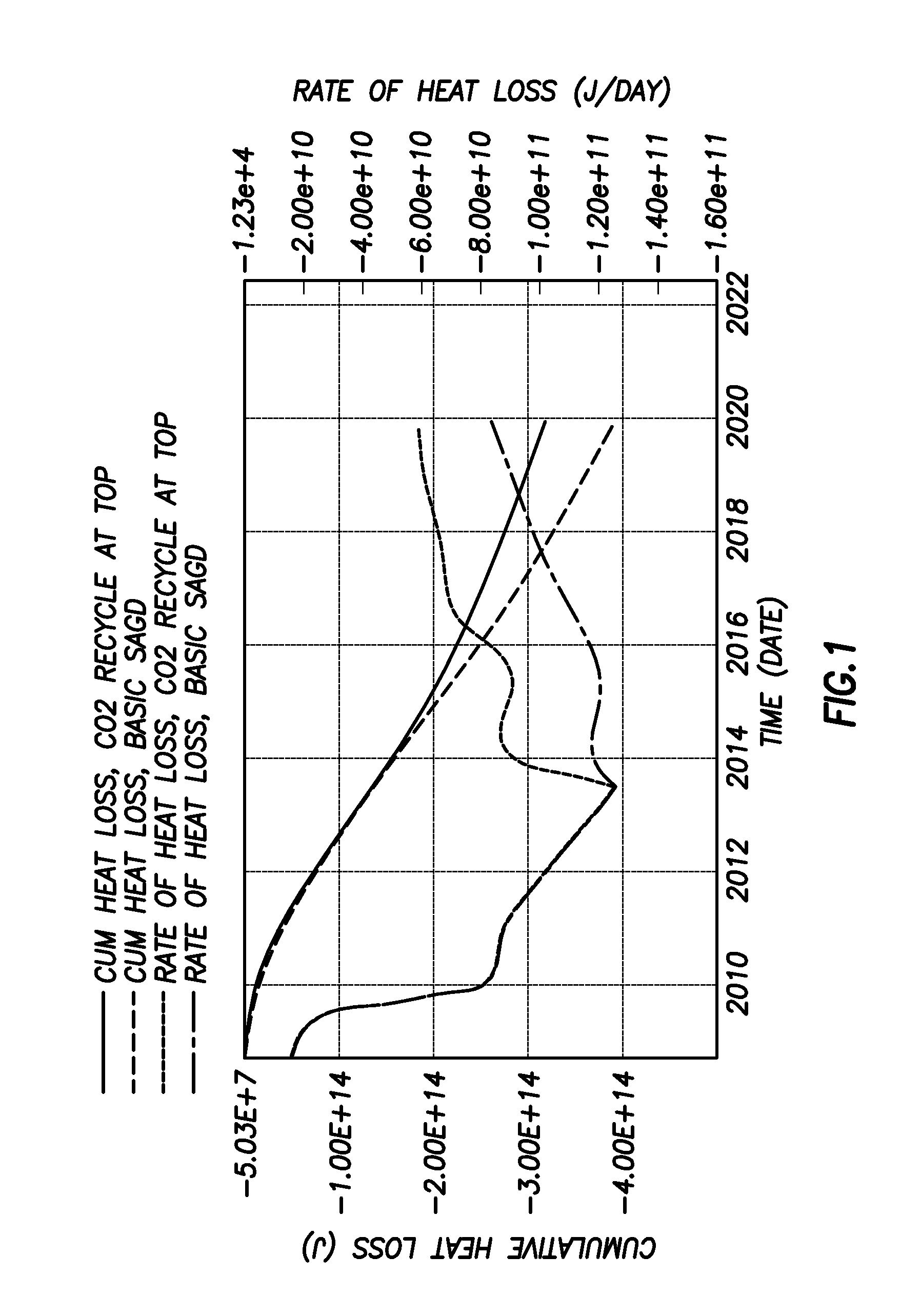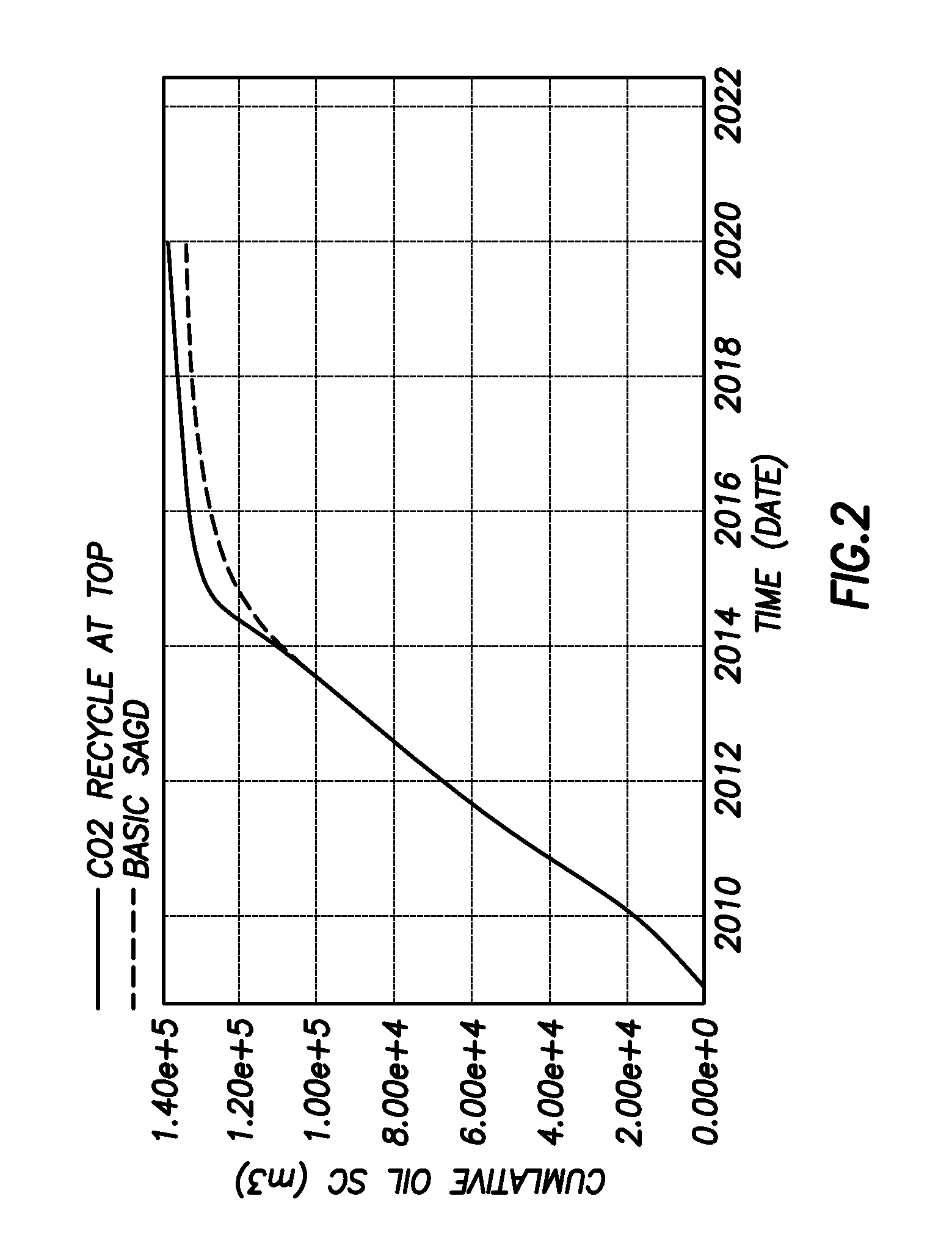Recycling co2 in heavy oil or bitumen production
a technology of heavy oil or bitumen and co2 is applied in the field of thermoplastic production methods, which can solve the problems of large amount of water and energy required to inject steam, high cost of process, and relatively insensitive process, and achieve the effect of maximizing efficiency and minimizing costs
- Summary
- Abstract
- Description
- Claims
- Application Information
AI Technical Summary
Benefits of technology
Problems solved by technology
Method used
Image
Examples
example 1
Simulation of CO2 Injection
[0040]The modeling work with CMG STARS, a commercial modeling software well accepted by the industry for thermal simulation, is shown in FIGS. 1, 2 and 3. The modeling assumes a horizontal target well that is 50 meters away from horizontal producer and steam injection well pair and at or near the top of the pay zone.
[0041]FIG. 1 is the simulated results using CMG STARS to predict the cumulative and rate of heat loss with or without using the method of the present embodiment.
[0042]As can be seen in FIG. 1, the rate of heat loss to over and under burdens in the case using the method of the present embodiment are reduced by about 20% as compared to conventional method. Additional efficiencies might be realized by sandwiching the steam injection well between a pair of target CO2 injection wells, thus ensuring good insulating and solvating coverage of the pay zone by the injected CO2.
[0043]Additionally, FIG. 2 shows the simulated results of oil recovery by usin...
PUM
 Login to View More
Login to View More Abstract
Description
Claims
Application Information
 Login to View More
Login to View More - R&D
- Intellectual Property
- Life Sciences
- Materials
- Tech Scout
- Unparalleled Data Quality
- Higher Quality Content
- 60% Fewer Hallucinations
Browse by: Latest US Patents, China's latest patents, Technical Efficacy Thesaurus, Application Domain, Technology Topic, Popular Technical Reports.
© 2025 PatSnap. All rights reserved.Legal|Privacy policy|Modern Slavery Act Transparency Statement|Sitemap|About US| Contact US: help@patsnap.com



